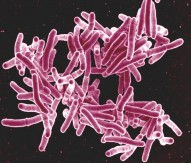
PROFILE: RNA in human disease diagnosis and therapy
The Laboratory of RNA Biology and Biotechnology at the Centre for Integrative Biology (CIBIO) of the University of Trento, Italy, is focusing on RNA to develop better diagnostic tools and therapeutics for a range of genetic diseases and cancers. The research projects developed in the laboratory also aim at unveiling new active roles for RNA molecules in the mechanisms underlying these diseases.
RNA impacts nearly every aspect of gene expression and it is now clear that a large portion of human genetic diseases are caused by mistakes in RNA metabolism. It has become progressively evident that RNA is not just a carrier of genetic information, but also a catalyst and a guide for sequence-specific recognition and processing of other RNA molecules.
The growing body of knowledge concerning RNAs is opening up exciting and unprecedented avenues for research: RNA molecules are today, at the same time, targets of therapeutic intervention, tools for functional studies and novel therapeutic molecules to treat human diseases.1
RNA splicing
Led by Dr Michela Alessandra Denti, the research in the RNA Biology and Biotechnology laboratory covers various diverse areas, and researchers focus on two main research interests.
Firstly, the laboratory studies different ways of modulating ‘RNA splicing’, a process that all messenger RNAs (mRNAs) undergo in the cell. Several gene mutations, which cause different rare inherited diseases, affect the splicing of specific mRNAs. At variance with mainstream gene therapy approaches, which aim at replacing the mutated gene with a functional DNA copy of the gene itself, Denti and her co-workers intend to correct the mRNA transcribed from the mutated gene, through an approach called ‘exon-skipping’.2 By introducing small RNA molecules, they mask the mRNA to the attack of the splicing machinery, inducing it to jump certain portions of the mRNA, thus restoring the correct message. The team predicts that exon-skipping holds a great deal of promise as a potential cure for genetic diseases, and several clinical trials have supported the notion that the technique could one day become commonplace.
The group is carrying out studies to develop a cure for a rare neurodegenerative disease: FrontoTemporal Dementia with Parkinsonism linked to chromosome 17 (FTDP-17). FTDP-17 patients have single nucleotide mutations in the gene for protein tau, which induce the aberrant inclusion of an exon in tau mRNA, and ultimately cause the accumulation of this protein in neurons and consequently result in neuron’s degeneration. Very recently, Denti and her colleagues have been successful in inducing exon-skipping and the correction of tau mRNA through the use small RNA molecules in cells. They are now working to show the efficacy of the approach in an animal model of the disease.
microRNAs
A second line of research is aimed at studying some very small RNA molecules called microRNAs (miRNAs) that have only recently been discovered. Due to their size these RNA molecules were overlooked for a long time, but it has become clear in the last decade that thousands of them are encoded in the genomes of all organisms, and play a crucial role in cells, fine-tuning the production of proteins. The deregulation of miRNAs has been implicated in several diseases, and the laboratory is studying the potential for specific miRNA, to be used as a tool in the early and accurate diagnosis of cancers, cardiac diseases and neurodegenerative diseases. The advantage of using miRNAs as biomarkers lies in the ease with which they can be detected, and in their extreme specificity.
In one project, the group focused on lung cancer, the leading cause of cancer mortality worldwide.3 As it is now possible to design therapies targeted towards specific forms of cancer, Denti and her colleagues were required to distinguish between squamous cell carcinomas (SCCs) and adenocarcinomas (ADCs). To do this, the researchers measured the quantities of miR-205 and miR-21 in cancer biopsies, and found that the results provided a useful marker for differentiating between SCCs and ADCs – an identification which is not always possible via traditional histochemical methods.4, 5 Recently, the researchers have discovered that measuring other miRNAs could enable the differentiation between neuroendocrine tumours both from the other two lung tumour types, and amongst themselves.
The group is also working towards the identification of molecular mechanisms in which miRNAs play a key role, thus representing optimal targets for a therapeutic approach.6, 7
References
(1) Denti MA, Viero G, Provenzani A, Quattrone A, Macchi P (2013) mRNA fate: life and death of the mRNA in the cytoplasm. RNA Biol. 10:360-366.
(2) Siva K, Covello G, Denti MA. (2014) “Exon-skipping antisense oligonucleotides to correct mis-splicing in neurogenetic diseases” Nucleic Acids Therapeutics. in press
(3) Del Vescovo V, Grasso M, Barbareschi M, Denti MA (2014) “microRNAs as lung cancer biomarkers.” World Journal Clinical Oncology. in press
(4) Barbareschi M, Cantaloni C, Del Vescovo V, Cavazza A, Monica V, Carella R, Rossi G, Morelli L, Cucino A, Silvestri M, Tirone G, Pelosi G, Graziano P, Papotti M, Dalla Palma P, Doglioni G, Denti MA (2011) “Heterogeneity of large cell carcinoma of the lung: an immunophenotypic and miRNA based analysis.” Am. J. Clin. Pathol. 136:773-782.
(5) Del Vescovo V, Cantaloni C, Cucino A, Girlando S, Silvestri M, Bragantini E, Fasanella S, Cuorvo LV, Dalla Palma P, Rossi G, Papotti M, Pelosi G, Graziano P, Cavazza A, Denti MA, Barbareschi M (2011) miR-205 expression levels in non-small cell lung cancer do not always distinguish adenocarcinomas from squamous cell carcinomas.” Am. J. Surg. Pathol. 35:268-275
(6) Bisio A, De Sanctis V, Del Vescovo V, Denti MA, Jegga AG, Inga A, Ciribilli Y (2013) Identification of new p53 target microRNAs by bioinformatics and functional analysis. BMC Cancer 13:552 doi:10.1186/1471-2407-13-552
(7) Del Vescovo V, Meier T, Inga A, Denti MA, Borlak J (2013) A Cross-Platform Comparison of Affymetrix and Agilent Microarrays Reveals Discordant miRNA Expression in Lung Tumors of c-Raf Transgenic Mice. PLoS ONE 8(11): e78870. doi:10.1371/journal.pone.0078870

Dr Michela Alessandra Denti
Group Leader
Laboratory of RNA Biology and Biotechnology
Centre for Integrative Biology
University of Trento
+39 (0)461 282740
Email Dr Michela Alessandra Denti






